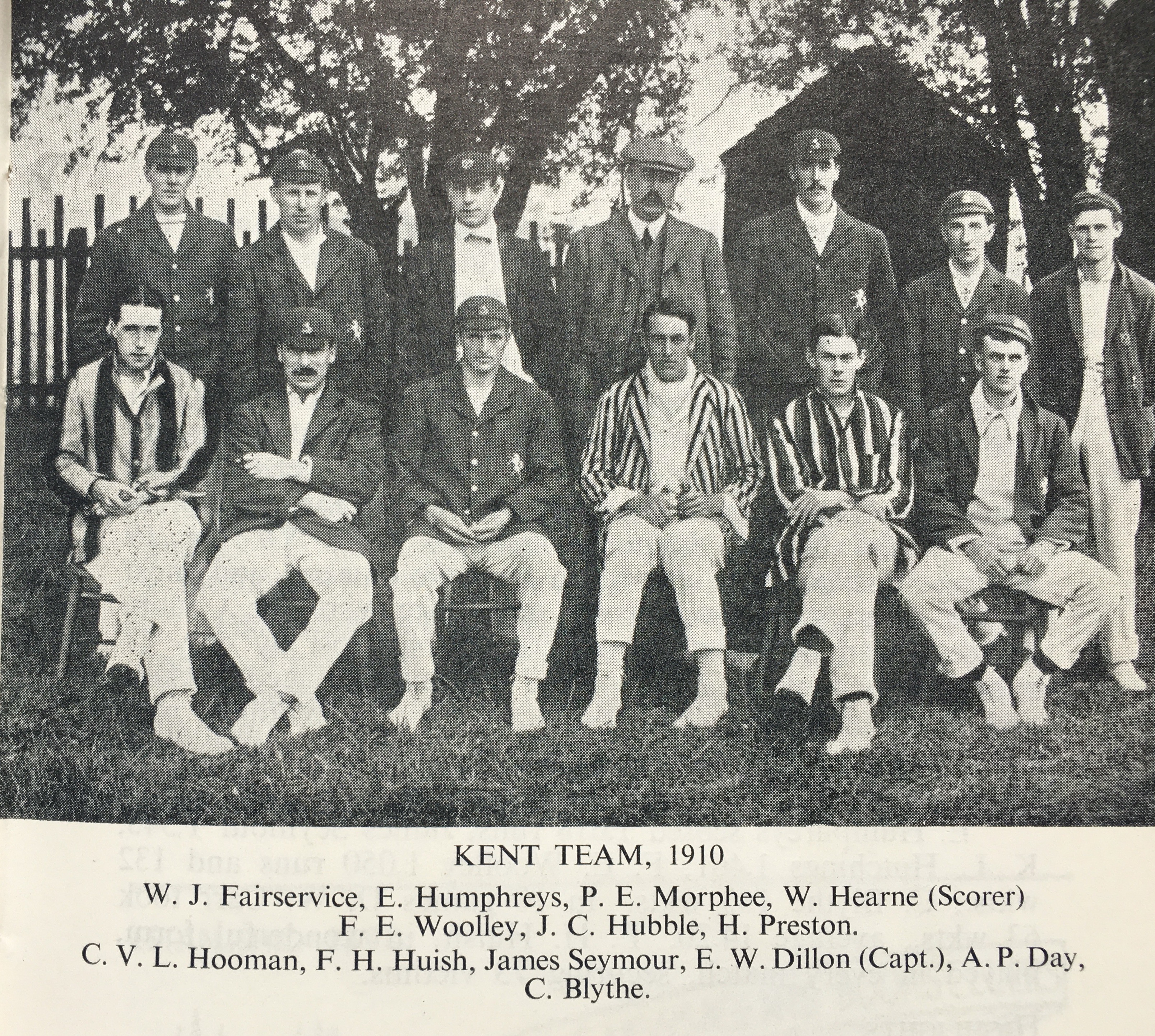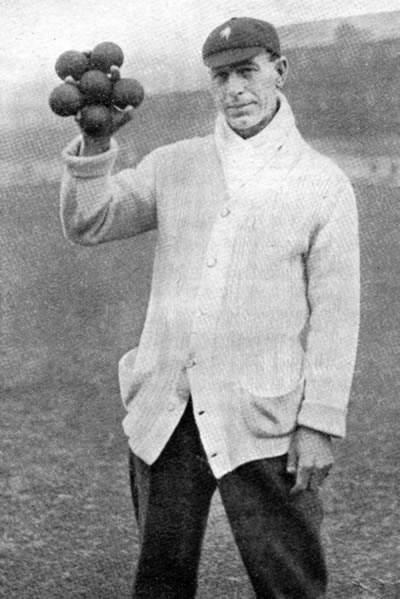Kent has never had much of a reputation for producing fast bowlers. Spin bowlers – yes, definitely; medium pacers – certainly, but out and out genuine fast bowlers, not so many. Unlike Yorkshire, Notts or Derbyshire who reputedly just had to whistle down a mine shaft to unearth a pir of opening bowlers, Kent seemed to have less luck with its mining community at Betteshanger or Snowdown. Most of our opening bowlers have been fast medium at best, and many born and bred outside the county.
In recent years, Kent pace bowlers who have gone on to win England caps include people like Martin Saggers, from Norfolk via Durham, Martin McCague, from Northern Ireland via Australia, Dean Headley, from Worcestershire via Middlesex, and Amjad Khan, from Denmark. The late great Alan Igglesden is an honourable exception, born in Farnborough, Kent, but even looking at our current stock of pacemen, we see players from Middlesex, Notts, Sussex (that’s our tame Dutchman Fred Klaassen – born in Haywards Heath), Western Australia, New Zealand and Zimbabwe – nobody from Kent.
But back in the golden age before the First World War, we did, briefly, have one bowler who was described as “a very fast right-handed bowler”. That man was Percival Ernest Morfee, known to all and sundry as Pat. He was born in Ashford on 2 May 1886 (or possibly 1887) the son of a pub landlord and a dressmaker. Soon after young Pat was born, his father quit the pub and joined the railway works at Ashford, which were rapidly expanding at this time. His son was expected to join Dad on the railways, but had always wanted to be a professional sportsman. His cricket was good enough to catch the eye of Captain McCanlis at the Tonbridge Nursery in 1907.

In 1910, Arthur Fielder fell ill and a replacement was needed for the Middlesex match at Lord’s, beginning on 16 May. Having had some success for Kent Second XI already that season, Morfee was drafted in and made an immediate impact. In the first Middlesex innings, he and Colin Blythe bowled unchanged, and Morfee finished with an analysis of 4 for 71 in 19 overs. Blythe at the other end took 6 for 27 in 18.2 overs, and the odd combination, to our modern eyes, of left arm spin and right arm very fast, bowled Middlesex out for 105. Morfee made his mark by bowling Pelham Warner, the Middlesex captain and opening bat, for 0 in both innings, third ball in the first innings and first ball in the second as Kent strolled to victory by an innings and 198 runs. However, his speed also encouraged a certain inaccuracy, which perhaps explains his second innings figures in that game of 3 overs, one for 30. And sadly for Morfee and Kent, he never did quite manage to become less erratic.
He played a further ten matches for the first team in over the next two seasons, but with Arthur Fielder fit again, Pat Morfee was unable to hold down a regular place in the side. In a couple of those matches he did not even get a bowl: against Yorkshire in 1910, Blythe and Woolley bowled unchanged in each innings, and in his final county match, against Notts at the Crabble, Dover, he batted at number 11 and did not bowl. Kent still won the match by 153 runs.
As an interesting aside to this brief career it is worth noting that he never played a game at Canterbury, either for the first or second elevens. This slightly casts doubt on the story, retold by R.L. Arrowsmith in his History of Kent Cricket, that Morfee, who was apparently a “great leg-puller and an expert mimic”, sometimes caused panic among the players and officials at the St. Lawrence ground by “picking some hideously inconvenient moment, and then ringing up in the well-known tones of Lord Harris to say he was just coming along.” As he never played there, would have trained at Tonbridge and lived in Ashford, why would Morfee have been at the St. Lawrence ground at all? I cannot imagine that endeared him to the hierarchy at Kent, especially not Lord Harris himself. And if he was there to conduct contract negotiations, he probably mimicked himself out of a job.
For whatever reason, Morfee left the staff at the end of the 1912 season and headed for Scotland where he played league cricket as a professional until war broke out. Then he proved to be quite the opposite to Charlie Blythe in his attitude to serving King and country. Although he was under 30 when war was declared and therefore eligible to volunteer, he did not do so, and managed to avoid military duty until conscription was introduced in 1916.
He survived the war, much of the time as an engineer in the Royal Flying Corps based in north France, and then after demobilisation, and with a new wife to accompany him, he moved to Lancashire and began a successful career as a Lancashire League professional. He began at Nelson, and in May took 8 wickets for 13 runs in 13 overs as his side overran Rishton. Five weeks later, in the return match, he took 9 wickets for 48, but obviously had acquired a taste for Rishton batsmen. Six years later, by now playing for Lowerhouse, he took 9 Rishton wickets for 22 runs, in a match that Lowerhouse still contrived to lose, and seven weeks later, in the return, took seven more wickets for 28 runs. In his entire Lancashire League career, which lasted on an off until 1931, he took 54 Rishton wickets at an average of 5.51. all in all, he had a very successful professional career, earning more than he would have done at Kent.
Latterly, Pat Morfee ended up at Darlington CC as their professional, coach and groundsman, and it was in Darlington that he died in 1945, aged only 59. Neither Wisden nor The Cricketer gave him an obituary, and such an individual and cussed life would surely have merited one.

One last thing – he had enormous hands, and was able to hold six cricket balls at a time, as the picture (copyright The Cricketer) shows. I don’t think even Stevo could do that.
0 Comments